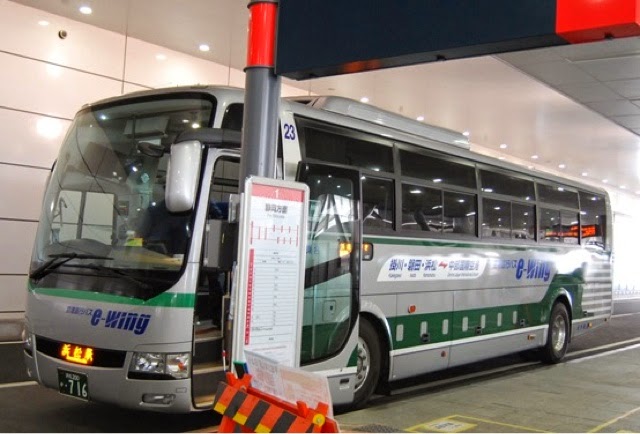Chubu Centrair International Airport in Nagoya has started various new services to cater to foreign visitors, including new bus services to the city, tourist information and announcements in Chinese and Korean.
The weakened yen and booming Southeast Asian economies have caused an influx of tourists to Japan in recent years, and Centrair is keen on improving services for foreigners to get those numbers higher.
One morning last month, a group of foreigners alighted from a bus in front of the airport terminal. Dubbed the Centrair Limousine, the bus takes paying passengers to and from three major hotels in central Nagoya, which is about 48 minutes away.
Among the visitors, who were on their way home, was a Singaporean family of five who had been visiting Nagoya.
“We have small children so it’s difficult to take trains. I’m very glad there’s a bus that can take us straight to the airport from the hotel,” a woman in the group said.
The Centrair Limousine is operated by Meitetsu Bus Co. Ltd. The service began in May 2013 with four daily runs. Each bus seats 55, but in February the average number of passenger per trip was just eight.
“We have not reached our target yet, but the number of passengers is slowly increasing,” said an official from Meitetsu Bus.
The company also launched a service from the airport to Takayama, a popular tourist destination in Gifu Prefecture, in February. The trip takes 3½ hours each way, running once a day.
The airport is also working to make the signage in the facility multilingual. Diagrams, explanations and even restaurant menus are now provided in five languages: Japanese, English, Korean, simplified Chinese and traditional Chinese.
Centrair’s efforts are also attempting to embrace the Internet age and promote its local charm.
The Chinese and Korean pages of its website, for example, have been revamped with information on “Nagoya-meshi” (Nagoya meals), a popular range of off-beat dishes including pork cutlets with miso sauce and spaghetti with curry sauce, as well as data on maid cafes in the Osu district in each language.
After two years planning and implementation, most of the areas in the terminal building now offer free Wi-Fi as well.
The airport has prioritized these services because tourism, particularly those from Southeast Asia, is surging. Last year, Japan broke the 10 million barrier for the first time as the number of people entering via Centrair jumped by 100,000 to reach 570,000.
Nevertheless, Centrair’s volume still pales by comparison with the major airports, including Narita in Chiba Prefecture and Haneda in Tokyo.
According to data from airport operators, 30 to 40 percent of the travelers leaving and entering Japan via Haneda, Narita and Kansai airports are foreigners, compared with 26 percent at Centrair.
“There are many great sightseeing spots in the Chubu region, but we do not get as many visitors as Tokyo or the Kansai area,” said Masao Niwa, a Chubu airport official in charge of developing new business opportunities with airlines.
Another problem they face is the number of flights.
While new routes are sprouting up between Nagoya and Southeast Asia, flights from Centrair to Europe remain few in comparison with Narita airport and Kansai International Airport.















No comments:
Post a Comment